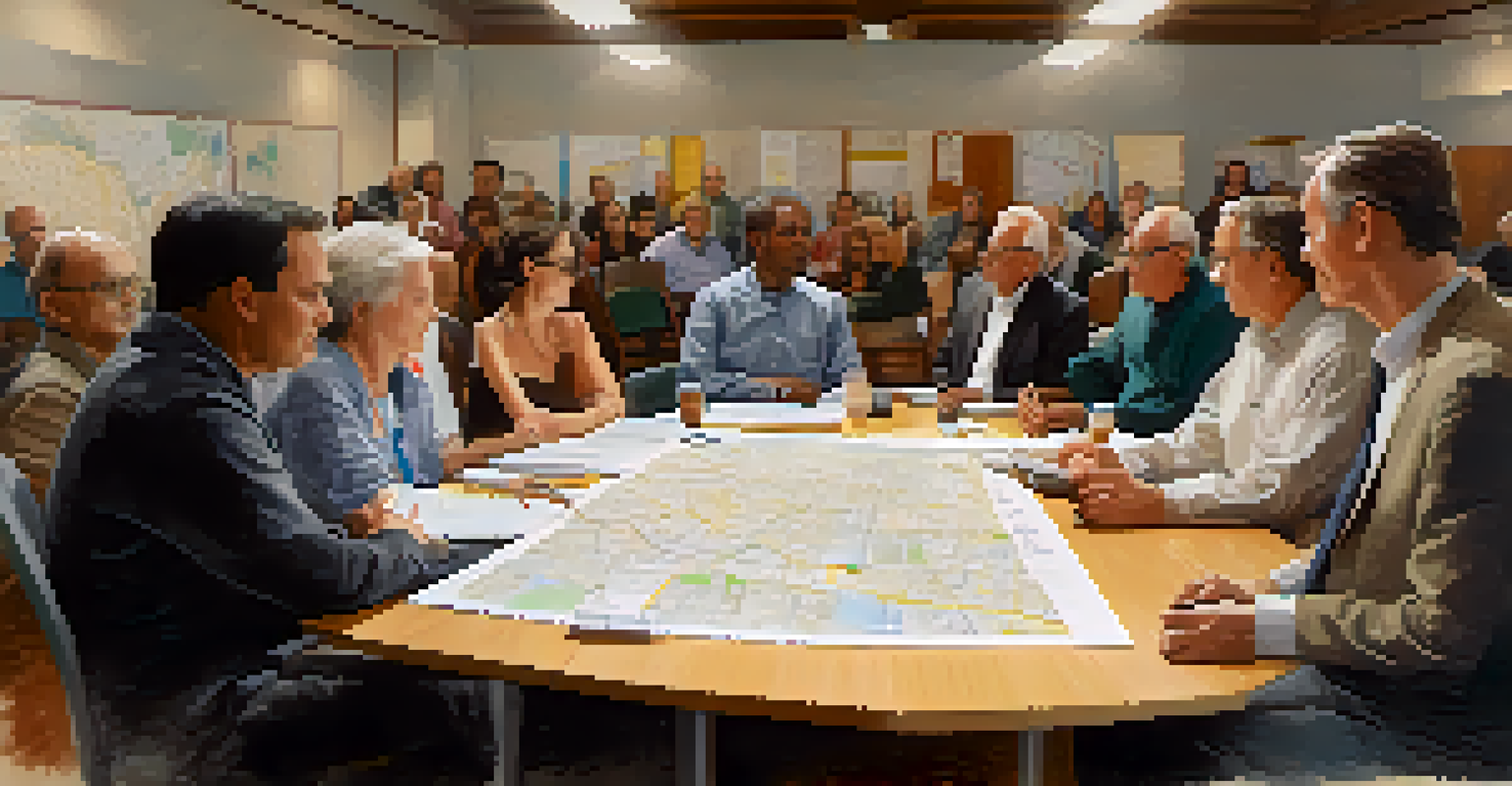Community Engagement in Urban Development: NYC Case Studies

The Importance of Community Engagement in Urban Planning
Community engagement is a cornerstone of successful urban planning. It ensures that the voices of residents are heard and considered in development projects. In New York City, this involvement not only enhances the projects but also fosters a sense of ownership among community members.
The best way to predict the future is to create it.
When residents actively participate, they provide insights that can lead to more effective and sustainable solutions. For instance, local input can help identify neighborhood needs that planners might overlook, ensuring developments truly serve the community's interests.
Moreover, engaging the community builds trust between developers and residents. This trust is essential in urban environments where changes can significantly impact daily lives, as it encourages collaboration and reduces resistance to new projects.
Case Study: The High Line and Community Input
One of the most prominent examples of community engagement in NYC is the High Line project. Originally an abandoned elevated rail line, it transformed into a beloved public park through extensive community involvement. Residents voiced their desire for a green space, leading to the project's development.

The High Line's design process included numerous public meetings, where local stakeholders shared their visions and concerns. This collaborative effort not only shaped the park's aesthetic but also its function, ensuring it met community needs.
Community Input Drives Urban Success
Active community engagement ensures that local voices are heard, leading to more effective and sustainable urban development.
Today, the High Line stands as a testament to the power of community engagement, drawing millions of visitors each year while enhancing the surrounding neighborhoods. It illustrates how a successful urban project can emerge when the community plays an active role.
Community Boards: A Vital Part of NYC's Urban Fabric
In New York City, community boards are essential for local governance and urban development. Comprised of local volunteers, these boards review city proposals and provide recommendations based on community feedback. This structure allows residents to influence decisions that directly affect their neighborhoods.
Community engagement is about building relationships, understanding needs, and working together towards a common goal.
Community boards often hold public meetings where residents can express their opinions on various development projects. These gatherings not only inform the board's decisions but also educate community members about the urban planning process.
By integrating community perspectives into the planning stages, NYC's community boards play a crucial role in ensuring developments align with the needs and desires of local residents. This model of engagement fosters a more democratic approach to urban development.
Participatory Budgeting: Empowering Local Residents
Participatory budgeting is another innovative approach that empowers NYC residents to have a say in how public funds are spent. This process invites community members to propose and vote on projects that address local needs, such as park improvements or public safety initiatives. It turns budget decisions into a community-driven effort.
By involving residents directly in financial decisions, participatory budgeting fosters a sense of accountability and transparency. Community members feel their voices matter, leading to increased civic engagement and trust in local government.
Nonprofits Enhance Community Engagement
Nonprofit organizations play a crucial role in facilitating community involvement by educating residents and amplifying their voices.
In NYC, this initiative has not only funded impactful projects but also strengthened community ties. Residents who participate in these budgeting processes develop a deeper connection to their neighborhoods, enhancing overall community cohesion.
The Role of Nonprofits in Urban Community Engagement
Nonprofit organizations play a vital role in facilitating community engagement in urban development. They often serve as intermediaries between residents and city planners, helping to amplify local voices. In NYC, these organizations provide resources and support to ensure community members can effectively advocate for their needs.
Many nonprofits organize workshops and forums that educate residents about urban planning and development processes. This education empowers individuals to participate more actively, equipping them with the knowledge necessary to engage in meaningful discussions.
Additionally, nonprofits often help coordinate community meetings and outreach efforts, ensuring diverse perspectives are included. Their involvement not only enhances the planning process but also builds a more informed and engaged citizenry.
Case Study: East Side Coastal Resiliency Project
The East Side Coastal Resiliency (ESCR) Project is a prime example of community engagement in action. Aiming to protect vulnerable neighborhoods from flooding, this project involved extensive community outreach and input. Residents were engaged through various forums, enabling them to voice concerns about safety and environmental impacts.
Feedback from the community informed critical design elements, ensuring the project addressed local needs while enhancing the area’s resilience. This collaborative approach not only improved the project’s effectiveness but also fostered community trust in the planning process.
Challenges in Inclusive Participation
Ensuring diverse representation and simplifying complex planning processes are key challenges in fostering meaningful community engagement.
As a result, the ESCR Project showcases how engaging residents leads to better urban planning outcomes. It highlights the importance of listening to community voices, especially when addressing pressing issues like climate change.
Challenges of Community Engagement in Urban Development
While community engagement is crucial, it’s not without its challenges. One major hurdle is ensuring diverse representation, as often, marginalized voices may not be adequately heard. This imbalance can lead to development projects that do not reflect the needs of the entire community.
Additionally, the complexity of urban planning processes can intimidate residents, making it difficult for them to engage meaningfully. Simplifying these processes and providing accessible resources is essential for fostering inclusive participation.

Finally, there’s the challenge of balancing differing opinions within the community. Developers and planners must navigate these dynamics carefully, seeking common ground to create solutions that benefit as many people as possible.